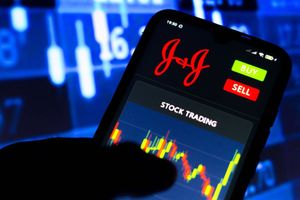
Most consumers looking for a new vehicle have come to the dire realization that there are no new cars available anywhere. This trend began in 2022 with the closing of semiconductor foundries worldwide due to COVID lockdowns, which had a massive trickle-down effect on various industries, including the automotive market, particularly for new vehicles. The cheap money brought to the markets via rock-bottom interest rates and incentives at dealerships to acquire new cars left car dealership management holding onto a common behavioral error - the hotshot fallacy.
The belief that whatever has been going on for some time will continue into the future led most new car dealerships to mismanage new orders and existing inventory, assuming that the profit machines would keep churning. However, many are now realizing what a big mistake that was. With no new cars available, most consumers are left with no option but to turn to the used car market for a solution.
Chaos is around the corner from opportunity
As used car dealers such as Carvana (NYSE: CVNA) also seemed to have mismanaged their inventory, experiencing impairments on used cars held in inventory due to consumers finally backing down. As consumers traded in their older cars for relatively newer used ones, priorities for aftermarket parts took a back seat, since most used car dealerships get rid of their inventory after safety, quality, and sometimes certification inspections.
This may be one of the reasons why Advance Auto Parts (NYSE: AAP) saw their comparable store sales - a major growth/cycle indicator in the retail sector - contract from 10.7% in 2021 to only 0.30% in 2022. Comparable store sales are an important metric, as companies can open as many stores as they like in a year, but what really matters for the company's overall growth is how much each existing store is selling compared to the previous year. In the case of Advance, 2022 did not paint a pretty picture.
However, an interesting pivot took place towards the end of the year, as financing costs rose to levels that made would-be car buyers stop and think again about their new purchase. Rising interest rates, along with bottleneck inventories, placed new car dealerships in a position to take advantage of consumer needs for new vehicles as they are now applying markups to their existing inventory and enjoying an average yield of 10.2% on their issued car notes.
Rising costs for new cars, along with slowing demand for used cars, have affected recent used car buyers by launching a new wave of negative equity positions, where consumers owe more than the vehicle is currently worth. Being "underwater" on a car will make it more likely for this population to hang onto their vehicles to pay them off over time. However, this also means they may be more hesitant to make necessary repairs or apply necessary parts before they are due.
While connecting these dots may be somewhat speculative, it would be nice to think that this is the case, given that the fourth quarter of 2022 saw resilient operating margins of 5.3%, which is higher than the 4.7% seen a year prior, $100 million USD more in revenue, and higher income margins at 8.8% compared to 7.4% in 2021.
Investors may be in for supportive tailwinds
Higher margins were brought to Advance by their Capital Expenditure (CAPEX) investments into their IT departments which are focused on cooking up better inventory management systems and supply chain optimization measures. This way the company can time their inventory purchases and working capital cycles to maximize margins, liquidity and ultimately free cash flow available to investors via dividends and share buybacks.
In fact, the company bought back around 3.8 million shares in 2022. Assuming management shares the point of view that these shares were undervalued, this would be a great push for investors to join forces with management in battling the bears. It appears that some big fund managers have followed suit by adding to their positions at these fresh 52-week low prices.
Management has provided positive guidance for the year ahead, stating net sales ranges between $11.4 and $11.6 billion USD, implying a 2.2% to 4.0% growth in sales, which is not far from historical reality. Comparable store sales (an important retail metric) are expected to be in the 1-3% range, also within historical models, with operating margins expected to come in at their highest levels yet of 7.8% to 8.2%, mainly due to the ROI from investing in inventory management systems and supply chain optimization.
If projected accurately, all of this would lead to diluted earnings per share of $10.20 to $11.20, placing the stock currently at a 9.9x to 10.9x P/E ratio, which is the lowest valuation since 2012.
If waiting for the eventual rally up to consensus valuations turns out to be longer than expected, investors can also sit tight on a relatively safe 5% dividend yield at these discount prices.






